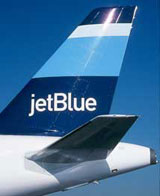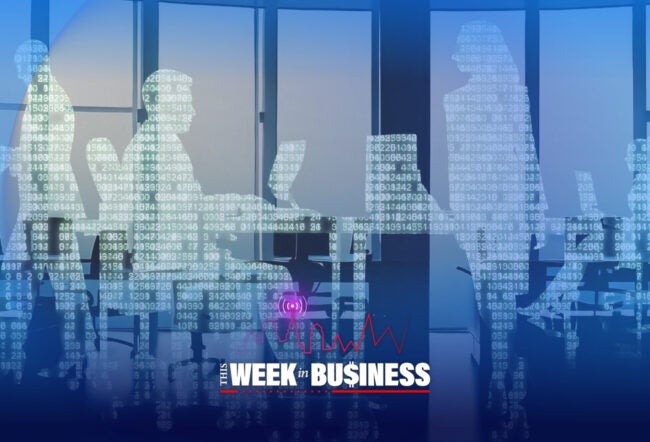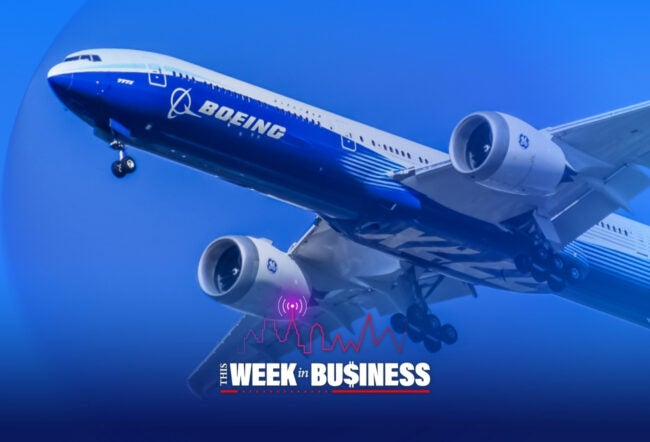For a few tense hours on September 21, the fate of JetBlue Airways hung on flight 292. The nose landing-gear of the Airbus 320 jet was stuck sideways. The plane, carrying 146 people, circled Los Angeles to burn off fuel and then came down safely with its landing-gear still askew.
The experience made David Barger, the airline’s president and chief operating officer, realize how fragile his company, or any firm, is. “We have worked so hard to develop this brand, and you can almost lose it in a minute,” he said during a leadership lecture earlier this month at Wharton.
A crash could have unraveled one of the most successful airline startups in recent memory. Five-and-a-half-year-old JetBlue, based at New York’s Kennedy Airport, has taken off. Wall Street likes its string of profits. Customers enjoy its amenities, including leather seats with more leg room than most other planes, and satellite television at no extra charge. Indeed, JetBlue last year earned $47.5 million on sales of $1.3 billion. Its stock more than doubled in the two years after it went public in 2002 (although since then it has retreated, partly because of concerns about rising fuel prices).
Chances are, none of that would have mattered had flight 292 crashed and passengers died. Since the incident, the Federal Aviation Administration has ordered special inspections of Airbus jets. JetBlue’s own inspections turned up no additional problems in its 92 Airbuses, Barger said.
The Los Angeles mishap marred what has been a sterling start for JetBlue. Many competitors continue to chalk up losses caused first by September 11, 2001, and now high fuel prices. JetBlue has grown steadily. “We have carried about 40 million customers and are in the process of taking delivery of a new aircraft about every 10 days,” Barger pointed out. “Between now and 2012, we have commitments on 433 airplanes, whether that’s firm commitments or options.” The airline’s fast growth shows how innovation can yield benefits in even the most hidebound and brutally competitive industry.
Informal Dress Code
The brainchild of industry veteran David Neeleman, who is the company’s chairman and chief executive, JetBlue has tried to combine the best features of low-fare carriers like Southwest, and traditional ones like United and American. Like Southwest, it eschews hub airports in favor of point-to-point flights and looks for innovative ways to cut costs. Its 1,100 call-center operators, for example, don’t work in a center at all, but at their homes in and around Salt Lake City. “I have had some investors ask, ‘Do they have uniforms?'” Barger quips. “And I’m like, ‘I have no idea whether they are wearing anything at all.'” Nor, he said, does he care — as long as they provide excellent customer service.
Like traditional carriers, JetBlue offers assigned seats and in-flight entertainment. Recently, for example, it announced that it was adding 100 channels of satellite radio. The company had to do business differently if it was to succeed in a “broken industry,” Barger said. “Today, three out of every 10 seats flown are on a bankrupt carrier. We are growing our company and trying to fend off competition that is insensitive to price. In bankruptcy, companies have protection, and underneath that umbrella they can offer very low fares. Independence Air is offering $59 from Washington, D.C., to the West Coast. How do you compete with that?”
One way is to find markets with fewer competitors. That strategy motivated JetBlue’s recent purchase of 100 Embraer 190 jets. The smaller planes will enable it to economically serve less-crowded markets such as Richmond, Va., and Austin, Texas. “A smaller airplane has some inefficiencies, but it allows us to mine markets that Southwest, Frontier and America West aren’t in,” Barger noted.
One criticism of JetBlue has been that it’s little more than a Southwest copycat. Barger admitted that his company has borrowed from the only major airline that has continued to thrive amid the industry’s recent slump. “We have taken some aspects of Southwest. Why? Because they work. There’s no pride of authorship there.”
Still, the two airlines differ in key ways, he said. In its quest for low cost and simplicity, Southwest won’t assign seats. JetBlue does so because that pleases customers. Likewise, Southwest flies only one model of airplane, Boeing’s 737, while JetBlue now flies two. Southwest has refused to diversify its fleet to avoid adding complexity. With its new Embraers, JetBlue is risking complication, but it won’t ever ape the traditional carriers, with a dozen different kinds of planes and webs of transoceanic flights. “In the future, I think we will be throughout North America, maybe into the Caribbean and Mexico,” he predicted. “I don’t believe we will have a third aircraft type flying over to Europe and Asia. If you want to go to Beijing, fly Northwest or United. That’s not us.”
Cutting the Losses
Another way in which JetBlue differs from Southwest is that its employees aren’t unionized. Some airline workers need union protection, Barger said. “There is a lot of brain-dead management in the airline industry.” Not surprisingly, he doesn’t count JetBlue’s employees among them. He has never been “opposed to unions as long as I thought they would be aligned with our goals. And organized labor is not.”
JetBlue has had occasional stumbles, like any startup. It tried to enter Atlanta and Santo Domingo in the Dominican Republic and ended up pulling out of both cities. In Atlanta, it prepared for a response from Delta, which is based in the city and dominates the flight schedule. “Atlanta-to-Los Angeles was one of the largest single-airline markets in the United States,” Barger explained. “As we looked at that, we said, ‘Hey, we can go Atlanta-to-Long Beach.'” But it failed to forecast the response from low-fare AirTran, which leased additional planes to fend off JetBlue’s entry. Barger and his colleagues elected to leave. “We weren’t going to be like the rest of the industry and just follow the testosterone and say, ‘Everybody’s going to lose.'”
Much attention has been lavished on JetBlue’s New York base and its clever name. But neither were a nonnegotiable part of the original plans. The founders considered locating the company in Philadelphia or Newark, N.J., and they originally wanted to call it “Taxi” and fly yellow planes. A persuasive investor changed their minds about the name. J.P. Morgan’s venture capital arm was planning to put up $40 million of the $128 million that the new airline needed. The head of the group invited Neeleman and Barger to his office and “told them, ‘If you name this airline Taxi, we’re not going to invest,'” Barger recalled. “That’s kind of motivating, isn’t it? The truth is, we were chasing a name. We thought the name was everything.”
What really matters is a brand, and a brand connotes a whole package of features and feelings, Barger said, adding that several leading consumer brands — consider Starbucks and Apple –have names that aren’t particularly clever and tell you little about their products. It’s the customer’s experiences with a firm, not its name, that creates a brand’s value.
The Airline Gene
Barger grew up in the airline business. Both his parents worked for United, based in Detroit. He joined New York Air after finishing up at the University of Michigan where he left five credits shy of his bachelor’s degree. When he endowed a professorship at the school, it offered him an honorary degree. “I told them that I didn’t want it and that I was going to come back and close out those five credits,” he said.
At New York Air, he climbed quickly through the ranks, starting as a part-time agent, making $5.50 a hour, and ending up directing the Detroit operation by the time he was 29. New York Air merged with Continental, and he was sent to Micronesia, the Pacific archipelago that includes the Marshall Islands. There, he faced a career crisis. A manager who had previously run Continental’s Newark hub became his boss. Barger didn’t respect him because of the inhumane way he handled employees. “About a week in, as this guy was laying down the law, I resigned based on principle. There was no way I was going to enact his management style.”
He returned, jobless, to Detroit where his former Continental bosses approached him about returning in another role but cautioned that he would have to do so at lower pay. He decided to go for it and worked his way back up, eventually becoming the boss of the Newark hub. That meant he was running the largest air operation in the New York region, with 10,000 employees and 800 flights a day.
His success attracted Neeleman’s notice. “David and the investors said, ‘You understand New York — the politics — and you understand big.'” Initially, he turned Neeleman down, accepting an offer from Delta instead. “I grew up in a United family, and I wanted to be part of a big airline — with big planes and international routes.” But Neeleman persisted, arguing that JetBlue was an opportunity to create something new — and better. Barger felt the urge to try entrepreneurship. “America didn’t need another airline, but maybe it did need a new way of doing business.” Besides, Barger realized that he could find another big airline post if JetBlue failed. “The line to get some of those jobs today is about one person deep, because who wants to go fight with labor all day long?”
Those spats point to the biggest shortcoming of many executives in airline management, namely their failure “to build trust with the frontline,” he said. “If labor and management haven’t hated each other, they have been close to it.” One of Barger’s goals has been to try to ensure that the same enmity doesn’t arise at JetBlue. He makes a point of speaking at employee orientations — so far he has attended more than 250 — and he teaches what he calls “servant leadership.” He expects JetBlue managers to build trust and “inspire greatness in others.”
Servant leadership requires frequent face-to-face contact with employees, he said. “You can’t do it by email, phone or newsletter. Whatever business you choose, remember the importance of presence — the ability to build trust one-on-one.”



